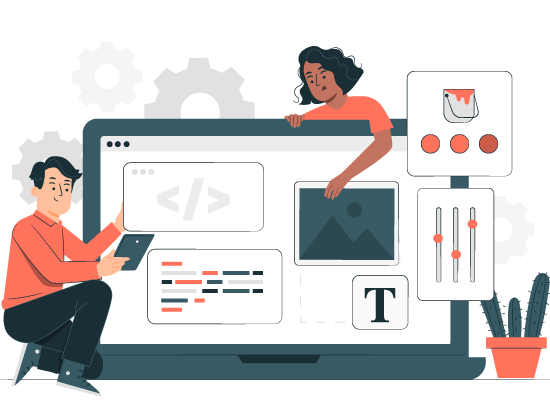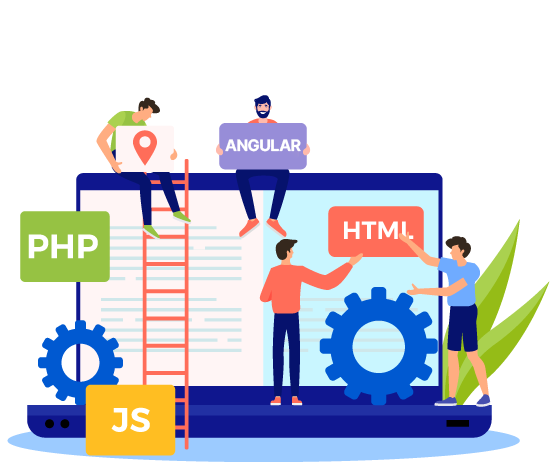Services We Deliver
Website Development Services We Offer
Website development involves the process of building and maintaining a website. It includes both front-end development (the visible part of the website that users interact with) and back-end development (the server-side and database interactions).
Here’s a general overview of the key steps involved in website development:
Define Requirements
Clearly outline the purpose, goals, and features of your website. Understand the target audience and their needs.
Choose a Technology Stack
Select the appropriate technologies for both front-end and back-end development. Common front-end technologies include HTML, CSS, and JavaScript, while back-end technologies might include languages like PHP, Python, Ruby, or Node.js.
Domain Name and Hosting
Choose a domain name that reflects your brand and is easy to remember. Select a reliable hosting provider to host your website.

Design the Database
If your website requires a database to store and retrieve data, design the database structure. Common database systems include MySQL, PostgreSQL, and MongoDB.
Front-End Development
Create the visual elements of the website using HTML for structure, CSS for styling, and JavaScript for interactivity. Ensure a responsive design for a consistent experience across various devices.
Back-End Development
Implement server-side logic and functionality. This includes handling user requests, processing data, and interacting with the database. Choose a web framework that aligns with your chosen back-end language.

Testing
Conduct thorough testing of your website to identify and fix any bugs or issues. This includes functional testing, usability testing, and performance testing.
Security Measures
Implement security best practices to protect your website and user data. This includes using HTTPS, validating user inputs, and securing the back-end against common vulnerabilities.
Optimization
Optimize your website for performance. This includes optimizing images, using content delivery networks (CDNs), and minimizing code for faster loading times.

Analytics
Implement web analytics tools to track user behavior and gather insights into how users interact with your website. This information can be valuable for making data-driven decisions and improving the user experience.
SEO Optimization
Implement on-page and technical SEO strategies to improve the visibility of your website in search engine results.
Content Management
If your website involves regular content updates, consider using a content management system (CMS) for easy content editing.

Website development is an iterative process, and ongoing updates and improvements are often necessary to adapt to changing requirements and technologies. Collaboration between designers and developers is crucial to ensure a seamless and effective website development process.

